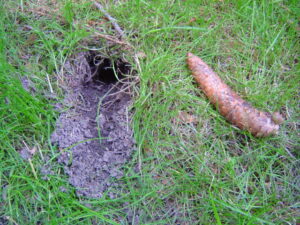The Active Seasons for Skunks
Skunks don’t actually hibernate over the winter, but they do become dormant and live off their fat deposits. Generally, skunks go into this state of torpor from November to March, but it depends on temperatures and needs. In torpor, the metabolism slows, but skunks can awaken from time to time. When the weather warms up, the skunks emerge to refuel their body. Skunks become very active in the spring because it is also mating season. Baby skunks are usually born in late April to May. Gestation takes 66 days. A female skunk can have a litter of four to seven kits, with four to five babies on the average. When a baby skunk is born, they are totally helpless, being both blind and deaf. In about three weeks, their eyes will open. They nurse for about two months after birth and will stay with the mother until the next mating season. The momma skunk raises the babies on her own, without help from a male. She is very protective of the babies. [embed]https://www.youtube.com/watch?v=cFyFqf4iE84[/embed]Signs of Skunks on Your Property
Don’t go by the skunk odor to decide whether you have a family of skunks on your property. During the mating season, a female will spray a male skunk if she doesn’t like him. Male skunks often fight over females, spraying each other in the process. In the spring, you may have a skunk passing through for an amorous tryst. Here are some concrete signs that a skunk has moved in:- Small holes in your flowerbed or garden.
- Skunk droppings, which are about one-quarter to one-half-inch in diameter and about one to two inches long. You may see undigested insect parts in the droppings.
- Pilfered trash cans.
- A musty odor with a faint to strong skunk aroma.




